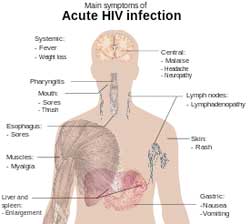
The experts, who attended a two-day consultation, acknowledged that the country made remarkable progress in expanding access to antiretroviral treatment, which has increased life expectancy among people living with HIV and has led to large declines in the rate of mother-to-child HIV transmission.
The meeting, held from earlier this week, was jointly hosted by the Joint United Nations Programme on HIV/Aids (UNAIDS), the National Institute for Communicable Diseases (NICD/NHLS) and the National Department of Health.
During the consultation, the experts agreed that combination prevention - biomedical and behavioural interventions - and expansion of antiretroviral treatment programmes was necessary to reverse the epidemic in South Africa.
They also stressed the importance of empowering women to reduce their risk of HIV infection; ensuring understanding of HIV and adherence to treatment; scaling up of HIV counselling and testing (HCT) and creating linkages to HIV treatment and care services.
The importance of voluntary medical male circumcision; as well as the distribution and consistent use of condoms to decreasing the levels of new infections in the country was also emphasised by the experts.
Acknowledging the complex nature of the HIV epidemic in South Africa, the participants said there was an urgent need to effectively deal with social and structural issues that increase vulnerability to HIV and TB infection and hinder access and uptake of HIV services.
The experts said overall, the HIV prevalence -- the proportion of individuals in a population who are living with HIV annually -- has increased.

"This reflects South Africa's success in expanding antiretroviral coverage, resulting in people with HIV living longer, which increases the HIV prevalence in the country. This increase in prevalence is clearly seen in adults aged 34 years and older," the experts said.
With 2.6m people accessing antiretroviral treatment in 2012, South Africa currently has the largest antiretroviral treatment programme in the world.
"This rapid increase of the national antiretroviral treatment programme has also resulted in a stable HIV prevalence among women attending antenatal clinics," the experts said.
In the younger age groups (15 to 24 years), prevalence has decreased because of declining new infections.
According to the experts, the successful implementation of the prevention of mother-to-child transmission (PMTCT) programme has led to a large decline in children acquiring HIV infection during pregnancy and childbirth.
"This success must be celebrated and sustained. Overall, less than 3% of infants of mothers living with HIV are born with HIV. These transmission rates were measured at six weeks after delivery and the results of the on-going Medical Research Council PMTCT evaluation will provide further details on mother-to-child transmission rates at nine and 18 months."
However, the experts noted that new HIV infections - the estimated total number of new (diagnosed and undiagnosed) cases - in the total population was still high.
However, they said, there was an indication that new HIV infections were declining in young people aged 15 - 24 years, although these still remained high in adults aged 25 years and older. The experts agreed on the need to analyse drivers of new infections to better understand, prioritise and develop targeted interventions.
The experts were drawn from various institutions, among others including the Africa Centre for Health and Population Studies, Centre for the Aids programme of research in South Africa, US Centers for Disease Control and Prevention, the HIV Modelling Consortium, Health and Development Africa, Wits Health Consortium Health Economics and Epidemiology Research and Human Sciences Research Council.
SAnews.gov.za is a South African government news service, published by the Government Communication and Information System (GCIS). SAnews.gov.za (formerly BuaNews) was established to provide quick and easy access to articles and feature stories aimed at keeping the public informed about the implementation of government mandates.
Go to: http://www.sanews.gov.za